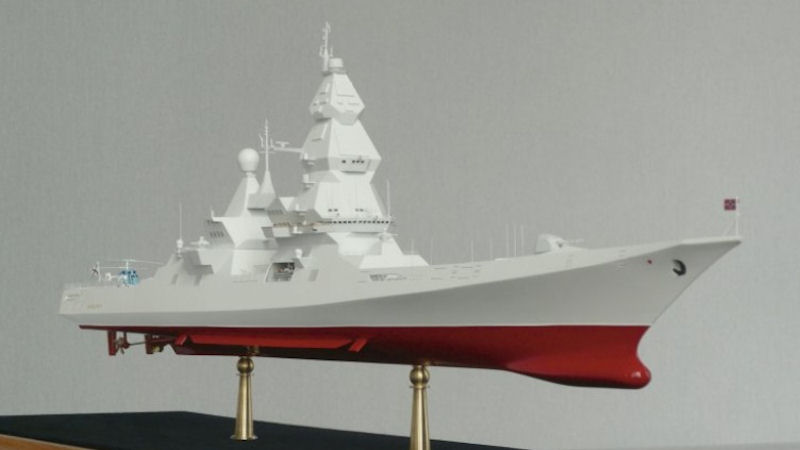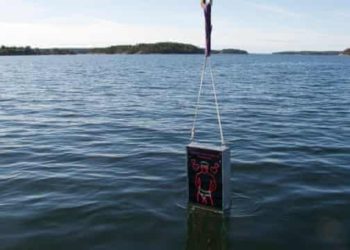Russian Navy and Air Force problems. Both services are modernising, but progress is uneven and mistakes are being made: Overview.
In the navy…
Once upon a time, the Soviet Navy was operating specialised surface platforms. On paper, at least, It was all rather simple, really: There was a ship type for any dedicated mission type. Amongst them were the Udaloy and Sovremennyy class destroyers: The Soviet bad boys from the 80’s.
The Udaloy is an anti-submarine destroyer and comes equipped with 8 anti-ship / anti-submarine missiles, two 100mm naval guns, two 213mm anti-submarine rocket launchers and two 553mm torpedo tubes. The ship also sports SAMs and CIWS as well as decoys against aerial threats and several types of anti-torpedo weapon systems.

The Sovremennyy is an anti-ship and anti-aircraft destroyer and carries 8 anti-ship missiles, 48 SAMs, 2 twin 130mm automatic naval guns, four 6 barrelled 30mm Gatling guns as well as 2 double 533mm torpedo tubes and two six barrelled anti-submarine rocket launchers. Finally, it carries decoy dispensers against air threats.

Both ships are designed to carry helicopters (2 for the Udaloy and 1 for the Sovremennyy) and both are capable of reaching 60km/h. Both ships are complementary and meant to work in tandem. They are well suited for escort duty or as part of a Kirov / Slava / Kuznetsov based battlegroup.
Then came the fall of the Soviet Union. And Russia, bankrupt, could not maintain its existing fleet, let alone operate or modernise it. As for building new platforms, it was all but a dream… Shipyards closed or idled. Skilled manpower retired or moved on. Experience and know-how slowly evaporated. Toward the end of the 2000’s, things got better…and within a decade, Moscow had plans, money and dreams, once again, for its armed forces and its Navy. However, the modernisation of the Russian Navy has been slow and erratic. While Moscow seems able to churn out very potent submarines such as the Yassen, Borei and advanced Kilo, it is still struggling with its surface fleet… In a way, the Russian Navy faces the same challenges as the US Navy: Block obsolescence. Whole classes of ships nearing the end of their life cycles all at once. To replace those, Russia, seemingly unable to build medium and large sized platforms, has focused on smaller designs.
The Steregushchiy-class Corvette, alongside the Admiral Gorshkov and Admiral Grigorovich classes of Frigate are potent new platforms… But so far, only one Gorshkov and 3 Grigorovitch have found their way into operational service. That’s simply not enough considering Russia operates 5 fleets (Northern, Baltic, Black Sea, Caspian, Pacific) which due to their geographical locations, cannot support one another… As for the Steregushchiy class, while it is a great design, it is only a Corvette, after all!
Alongside this, Russia is fielding new Buyan and Buyan-M Corvettes which lack anti-air and anti-submarine capabilities and are unable to operate in high seas, making them littoral ships, rather than ocean going ones. Then, there is the Karakurt-class, which is also a Corvette, and while it has better seafaring qualities than the Buyan, it is still only a Corvette and it is also lacking defence against air and submarine attacks…
Furthermore, Russia is also working on the Project 20386, which depending on who you ask is classed as a heavy-Corvette or a light-Frigate… Basically, Moscow is currently working on fielding 3 different classes of Frigate and 5 different classes of Corvette simultaneously, with the Corvettes being sitting duck should they venture beyond the air and anti-ship coverage of littoral installations. There is no economies of scale, here. Just several projects advancing alongside one another on a parallel route, swallowing money as they do so, without central coordination. Surely, a good multirole Frigate or Destroyer design would have worked better!
However, there might be light at the end of the tunnel: Initial research and design work is being conducted on the Project 23560 Lider, which is presented as a large Destroyer that can take on the roles of both the Udaloy and Sovremennyy Destroyers as well as the Slava class Cruisers. Such a multirole platform is exactly what Moscow needs. However, completion of the first prototype might not be ready before the end of the 2020’s at the earliest: It is estimated it might take 7 years to build the first Lider platform. While work on the design itself is currently ongoing, there is no signs yet that we are close of seeing the keel of the first Lider being laid down any time soon. Furthermore, the slow assembly /manufacturing rate means it might take a couple of decades before Moscow can field those in any meaningful numbers! Unless Moscow decides this is too ambitious a project and starts looking for a more modest multirole platform to be mass-produced, which considering the Lider price tag, is very likely!

Moscow has delayed, squandered money and time… And so, the inevitable has happened: The Russian Navy is about to invest in its 8 Udaloy class anti-submarine warfare Destroyers to plug the gap in current and future capabilities. The first one listed for modernisation is the Marshal Shaposhnikov (BPK 543) of the Pacific fleet. While this step is now needed, it could have been avoided had Moscow managed its Navy rearmament program better and earlier.
To be honest, the Udaloy is a capable and potent platform and modern sensors and weapon systems will keep it being relevant for a while longer… And considering the current and future gap in AA capabilities within the Russian fleet, do not be too surprised if the Sovremennyy destroyers end up being modernised, too, at some point!
Russian Air Force (VKS) reborn…
Throughout the 1990’s and 2000’s, Russia’s armed forces hardware literally fell apart, due to a combination of ageing platforms and lack of investment. Throughout those two lost decades, the Russian army, navy and air force earned a reputation for operating rust buckets. It all changed after the Russo-Georgian war of 2008, as Russia subsequently launched an ambitious and deep reform of its armed forces.
The Russian Air Force has seen serious investment between 2010 and 2018, with the purchase of 443 new aircraft. Here is a little breakdown of some of their new acquisitions:
Su-34 strike aircraft: 98 units purchased.
Su-35S air
superiority fighter: 78 units purchased.
Su-27SM3 fighter: 12
units purchased.
Su-30SM fighter: 114 units purchased.
Su-30M2
fighter: 16 units purchased.
MiG-29SMT fighter: 14 units
purchased
Yak-130 trainer: 110 units purchased
Il-76MD90A
cargo plane: 1 unit purchased.

That’s an average of 57 new units per year, and while it is far from the 90 new units procured annually by the USAF, the Russian figure is still bigger than what most NATO member states are procuring. Furthermore, the USAF has seen a huge drop in new platform procurement: Prior to 1991, the US Air Force used to buy an average of 500 new platforms a year! That this figure has now dropped to an average of 90 annually shows just how much the investment has dropped. In fact, the average age of planes flown by the USAF is 28 years and new platforms acquisition cannot offset the amount of platforms being retired. As such, the USAF aircraft inventory has declined by 57% in the last 30 years!
Those 443 new Russian planes do not tell the whole story, though: The Russian armed forces have also purchased and fielded 562 brand new helicopters in that same period of time. Furthermore, existing platforms are also being modernised. Amongst those, we can find:
– 130 MiG-31 interceptors being modernised to the BM variant. An
additional 10 MiG-31 have been brought up to the BP (K) variant
meaning they have been modified to be able to fire the Kinzhal
missile.
– 120 Su-25 ground attack aircraft are being
modernised to the SM3 variant.
– 16 Tu-160 strategic bombers
are being modernised to the M2 variant.
– 60 Tu-95 strategic
bombers are being upgraded to the MSM variant.
– 30 Tu-22
tactical bombers are being upgraded to the M3M variant, which will
turn them into strategic bombers once again.

However… It seems the Russians have forgotten something: Tankers.
Russia only operates 19 Il-78 tankers. Considering the size of their country and fleet, it is simply not enough. Factoring in that a fair few of those tankers are being used to support the Russian operations in Syria, it leaves them with very little spare capacity indeed. And procurement of new tankers will be painfully slow: The Il-76MD90A is just about to enter its serial production phase but two things are in the way to prevent Russia from quickly acquiring new tankers which will be based on that platform:
1) That platform is in high demand. Russia needs to acquire cargo planes ASAP as its airborne troops are expending rapidly and as its fleet of cargo planes is getting old. As such, it is estimated that the Russians will need at least 50 new cargo planes throughout the next decade. Furthermore, Russia wants to replace its 19 A-50 and A-50U AWACS platforms with the new A-100. One problem is that the A-100 is also based on the Il-76MD90A platform!
2) Ilyushin and its sub-contractors are operating old assembly lines and the construction pace is slow. Very slow. Current optimistic estimates place the rate of construction at 2 units per year. It seems, then, that United Aircraft Corporation will need to find the money to invest in its Ilyushin subsidiary to increase efficiency and production capabilities, just as it has done with Sukhoi. In the meantime, the Russians will have to find an alternative solution. One of them could be to use some of Tupolev’s spare production capacity to produce a tanker variant based on the Tu-204 medium airliner. But this too, might take time…
In conclusion…
The Russian armed forces are modernising at breakneck speeds, but progress is uneven. The Navy current priority seems to be about keeping a string of design bureaus and shipyards busy rather than streamline the various classes of ships currently in its service and focus on a long term strategy. We all know Russian shipyards lack experience in designing and building ships larger than a destroyer, but a good multirole vessel would do, right now. There are plenty of talks about the Shtorm and Lamantin classes of aircraft carriers, Priboy class amphibious ships and Lider class destroyers online, but Russia will not be able to build those or a indeed coherent fleet if it does not get the basics right first… As for the VKS, its current line-up is potent but the lack of tankers limits its area of deployment at home. The Russian Navy and Air Force have demonstrated in recent times that they are developing into capable and skilful branches. The Navy, however, with the amount of capital ships in its service dwindling and ageing, is slowly being relegated to the status of regional power, with limited means of projections. The Air Force is roughly in the same situation: In the absence of sufficient tankers and friendly bases abroad, the VKS lacks the legs to projects itself much further than Russia’s near abroad.
Right now, the Russian Navy and Air Force are shaping into fearsome defensive tools. But such a posture, without any means of projections lacks prestige and could seriously limit Moscow’s geopolitical ambitions as well as its future military options and capabilities.










